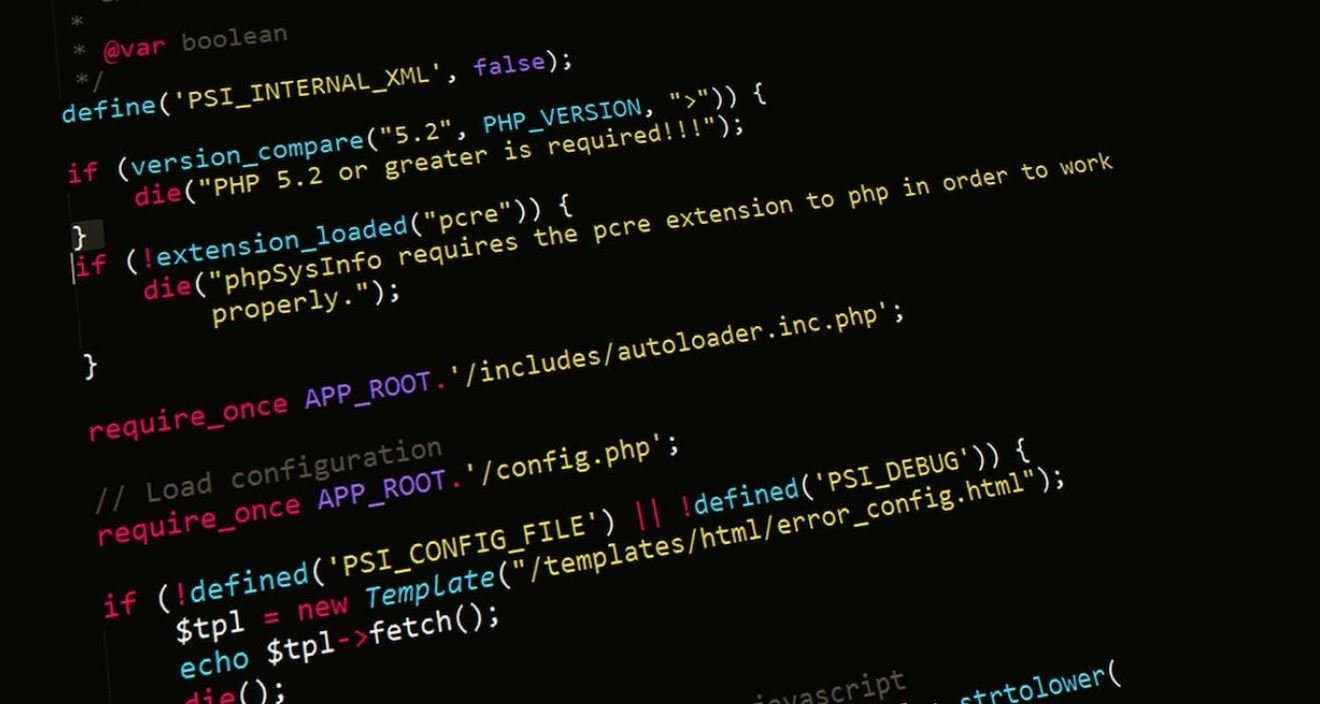Language Processing in Linguistics
Language processing is a critical area of study in the field of linguistics. It involves the analysis, understanding, and generation of human language by computers and other natural language processing (NLP) systems. This interdisciplinary field combines linguistics, computer science, cognitive science, and artificial intelligence to unravel the complexities of human language.
Key Takeaways:
- Language processing involves the analysis, understanding, and generation of human language by computers and other NLP systems.
- It combines principles from linguistics, computer science, cognitive science, and artificial intelligence.
- The field aims to develop algorithms and models to enable machines to process, interpret, and respond to human language.
- Language processing can be divided into various subfields such as speech recognition, machine translation, and sentiment analysis.
Language processing aims to develop algorithms and models to enable machines to process, interpret, and respond to human language. It utilizes linguistic theories and computational methods to extract meaning, analyze grammar and syntax, and generate appropriate responses. *One interesting aspect of language processing is the challenge of parsing ambiguous sentences, where the same words can have multiple interpretations depending on the context.*
To understand the complexities of human language, language processing can be divided into various subfields. These subfields focus on different aspects of language analysis and generation. Some prominent subfields include:
- Speech Recognition: The process of converting spoken language into written text, allowing computers to understand and transcribe spoken words.
- Machine Translation: The automatic translation of text or speech from one language to another, facilitating communication across different languages.
- Sentiment Analysis: The analysis of textual data to determine the sentiment or emotional tone expressed, helping businesses gauge customer opinions and attitudes.
| Subfield | Description |
|---|---|
| Speech Recognition | Converts spoken language into written text. |
| Machine Translation | Automatically translates text or speech between languages. |
| Sentiment Analysis | Analyzes text to determine emotional tone or sentiment. |
Language processing involves the utilization of both rule-based and statistical models. Rule-based models rely on linguistic rules and patterns to analyze and generate language. Statistical models, on the other hand, learn patterns and relationships from large sets of language data. The combination of these approaches leads to more accurate language processing systems. *An interesting application of language processing is the development of chatbots capable of engaging in natural language conversations with users.*
Challenges in Language Processing
Despite the significant advancements in language processing, several challenges remain. These challenges include:
- The ambiguity of language, where multiple interpretations and meanings can arise.
- The complexity of syntax and grammar, as languages have various rules and structures.
- The need for large and diverse language datasets to train robust language models.
Table 2 provides an overview of the challenges in language processing.
| Challenges | Description |
|---|---|
| Ambiguity | Multiple interpretations and meanings of language. |
| Syntax and Grammar | Complexity in language rules and structures. |
| Data Availability | Needs large and diverse language datasets for training. |
Despite these challenges, language processing continues to advance rapidly. Ongoing research and development in the field provide new insights and improved methods for analyzing and generating language. Researchers strive to enhance the accuracy and naturalness of language processing systems, making them more effective in real-world applications.
Language processing in linguistics is a fascinating field that bridges the gap between human language and machines. Its interdisciplinary nature and wide range of applications make it a vital area of study. By understanding and harnessing the power of language processing, we can create innovative technologies that revolutionize communication and human-computer interaction.

Common Misconceptions
Misconception 1: Language processing in linguistics is the same as computer programming
One common misconception about language processing in linguistics is that it is the same as computer programming. While both fields involve the study of language, they are different disciplines with distinct goals and methods. Linguistics focuses on understanding the structure, rules, and functions of language, while language processing in computer programming deals with developing algorithms and technologies that enable computers to understand and analyze human language.
- Linguistics focuses on the theoretical aspects of language.
- Language processing in computer programming focuses on computational models for language understanding.
- Linguistics aims to uncover the cognitive foundations of language.
Misconception 2: Language processing in linguistics is about translation
Another misconception is that language processing in linguistics is primarily concerned with translation. While translation is one application of language processing, the field encompasses a much broader range of topics and methods. Language processing in linguistics involves analyzing and understanding the structure, meaning, and use of language, as well as studying how language is produced and perceived.
- Language processing in linguistics includes studying syntax, semantics, and pragmatics.
- Translation is just one practical application of language processing techniques.
- The field covers areas such as speech recognition and natural language understanding.
Misconception 3: Language processing in linguistics can perfectly mimic human language abilities
Many people believe that language processing in linguistics can perfectly mimic human language abilities, but this is not the case. While significant advancements have been made in natural language processing, the ability of computer systems to fully comprehend and generate human language remains limited. Language processing models are based on algorithms and statistical techniques, which are different from the complex cognitive processes involved in human language production and comprehension.
- Language processing models are based on rule-based or statistical algorithms.
- Human language abilities involve cognitive processes such as memory, reasoning, and context understanding.
- Language processing systems have limitations in understanding humor, sarcasm, and ambiguity.
Misconception 4: Language processing in linguistics is solely focused on written language
Some people mistakenly assume that language processing in linguistics is solely focused on written language. However, language processing encompasses both written and spoken language. Linguists and language processing researchers study the structures, patterns, and meanings of both written texts and spoken utterances to gain insights into how languages function.
- Language processing involves analyzing speech sounds and phonetics.
- Written language processing includes tasks such as text classification and sentiment analysis.
- Linguists study grammar and syntax in both written and spoken language.
Misconception 5: Language processing in linguistics is a solved problem
Lastly, there is a misconception that language processing in linguistics is a solved problem and that we have complete understanding of how language works. However, language processing is an ongoing field of research with many challenges and open questions. Researchers are constantly developing new models, algorithms, and techniques to improve our understanding and capabilities in language processing.
- New challenges arise as language evolves and changes over time.
- Language processing is still far from achieving human-like language understanding.
- Ongoing research aims to address limitations in language processing systems.

Language Processing in Linguistics
Language processing is a fundamental aspect of linguistic study. It involves analyzing and understanding how language works in terms of its structure, meaning, and use. This article explores various points and data related to language processing within the field of linguistics.
Table Title: Typology of Language Processing Systems
In linguistics, language processing systems can be broadly classified into three main types based on their structure and processing mechanisms.
| Type | Description |
|---|---|
| Syntactic Processing | Focuses on the analysis of sentence structure and the rules governing word order, phrase formation, and syntactic relationships. |
| Semantic Processing | Examines the meaning and interpretation of words, phrases, and sentences, exploring concepts like word sense disambiguation and semantic role labeling. |
| Pragmatic Processing | Addresses the study of language use in context, considering how meaning is shaped by social, cultural, and situational factors. |
Table Title: Common Applications of Language Processing
Language processing has various practical applications across multiple domains and industries. Here are some examples:
| Domain | Applications |
|---|---|
| Machine Translation | Automated translation systems for facilitating communication across different languages. |
| Sentiment Analysis | Assessing and understanding the sentiment expressed in written text, often used for market research and social media analysis. |
| Speech Recognition | Converting spoken language into written text, enabling various voice-controlled applications and transcription services. |
| Information Retrieval | Enhancing search engines to retrieve relevant information based on user queries, taking into account language nuances and context. |
Table Title: Challenges in Language Processing
Despite the advancements in language processing, several challenges persist in the field. Understanding these challenges is crucial for further progress.
| Challenge | Description |
|---|---|
| Ambiguity | Languages often contain words or phrases with multiple possible meanings, making accurate interpretation challenging. |
| Idiomatic Expressions | Interpreting idiomatic expressions and figurative language poses difficulties due to their non-literal nature. |
| Contextual Understanding | Linguistic meaning heavily relies on context, requiring systems to understand situational and cultural factors. |
| Domain-Specific Knowledge | Language processing systems must possess domain-specific knowledge to accurately analyze specialized content. |
Table Title: Notable Language Processing Techniques
A variety of techniques and methodologies are employed in language processing. These techniques contribute to the advancement of the field.
| Technique | Description |
|---|---|
| Statistical Language Processing | Utilizes statistical models to analyze and generate language based on the frequencies and patterns found in large corpora of text. |
| Machine Learning | Enables language processing systems to learn from data and improve their performance through the use of algorithms. |
| Rule-Based Systems | Relies on predefined linguistic rules and grammatical structures to process and analyze language. |
| Neural Networks | Utilizes artificial neural networks to simulate and model the processing mechanisms observed in the human brain. |
Table Title: Benefits of Language Processing Research
Language processing research provides numerous benefits to various fields and industries, contributing to societal and technological advancements.
| Field/Industry | Benefits |
|---|---|
| Education | Improved language instruction, personalized tutoring, and language assessment tools. |
| Healthcare | Automated analysis of medical documents, clinical decision support, and natural language interfaces. |
| Information Technology | Enhanced search and information retrieval systems, voice assistants, and chatbots. |
| Social Sciences | Analyzing linguistic patterns in society, studying communication dynamics, and understanding cultural differences. |
Table Title: Language Processing Applications in Everyday Life
Language processing techniques and technologies are seamlessly integrated into various aspects of our daily lives.
| Application | Examples |
|---|---|
| Smartphones | Voice recognition for voice commands and voice-to-text messaging. |
| Virtual Assistants | Devices like Amazon Alexa and Google Assistant that understand and respond to voice-based commands. |
| Autocorrect | Spelling correction feature in word processors and messaging applications. |
| Language Learning Apps | Apps that analyze pronunciation and provide language exercises and lessons. |
Table Title: Language Processing in Computational Linguistics
Computational linguistics focuses on developing algorithms and models for language processing. It encompasses various subfields and research areas.
| Subfield/Area | Focus |
|---|---|
| Speech Processing | Analysis, synthesis, and recognition of spoken language, as well as speech-to-text conversion. |
| Language Generation | Generating coherent text or speech based on given input, often used in natural language generation systems. |
| Information Extraction | Automatically extracting structured information from unstructured text, such as named entities or relationships. |
| Computational Psycholinguistics | Studying the cognitive processes involved in language production, comprehension, and acquisition using computational models. |
Table Title: Future Trends in Language Processing
Ongoing advancements in technology and research open up promising avenues for the future of language processing.
| Trend | Description |
|---|---|
| Deep Learning | The application of deep neural networks and advanced machine learning algorithms to improve language processing tasks. |
| Multilingual Processing | Developing models and systems that can efficiently handle multiple languages simultaneously. |
| Contextual Understanding | Focusing on better contextual understanding by incorporating world knowledge and common-sense reasoning into language models. |
| Real-Time Processing | Advancing language processing systems to work in real-time, enabling instant applications and faster analysis. |
Language processing plays a vital role in linguistics, with applications spanning numerous domains. The field faces challenges, but advancements in techniques and research continue to drive progress. As language processing continues to evolve, it holds the potential to revolutionize the way we communicate and interact with technology.
Frequently Asked Questions
What is language processing in linguistics?
Language processing is the study of how humans comprehend, produce, and acquire language. It involves investigating the cognitive and computational processes underlying various aspects of language, such as syntax, semantics, pragmatics, and phonetics.
How is language processed in the brain?
Language processing in the brain involves complex neural networks and various brain regions. It includes areas responsible for speech perception, grammar processing, word recognition, and semantic understanding. Different neural pathways collaborate to facilitate language comprehension and production.
What is the importance of language processing in linguistics?
Understanding language processing is crucial for gaining insights into human cognition, communication, and development. It helps linguists and researchers comprehend the mechanisms behind language production, comprehension disorders, bilingualism, second language acquisition, and natural language processing in machines.
What are some common research methods used in language processing?
In language processing research, various methods are employed, including behavioral experiments, eye-tracking studies, neuroimaging techniques (e.g., fMRI, EEG), computational modeling, corpus analysis, and psycholinguistic experiments. These methodologies help uncover the intricate details of language processing and its underlying mechanisms.
How does language processing contribute to natural language understanding?
Language processing plays a vital role in natural language understanding. By studying how humans comprehend language, linguists can design algorithms and systems that enable computers to understand, interpret, and respond to human language in a more natural and meaningful manner. Natural language processing (NLP) techniques are widely used in areas such as machine translation, chatbots, and voice recognition.
What are some challenges in language processing research?
Language processing research faces several challenges, including ambiguity in language, contextual understanding, resolving syntactic and semantic ambiguities, analyzing figurative language, accounting for individual variation, and integrating multiple levels of linguistic information. These challenges require sophisticated models and algorithms to tackle.
How does language processing differ across different languages?
Language processing can vary across different languages due to differences in grammar, syntax, word order, phonetics, and cultural factors. Some languages may have more complex sentence structures or richer morphological systems, influencing the processing strategies employed by speakers of those languages.
What are some applications of language processing in everyday life?
Language processing has numerous practical applications in everyday life. Some examples include voice assistants like Siri and Alexa, automated language translation tools, text-to-speech synthesis, sentiment analysis in social media, grammar and plagiarism checkers, and speech recognition systems used in call centers.
How does language processing contribute to machine learning and AI?
Language processing is essential in machine learning and artificial intelligence (AI) for tasks like text classification, sentiment analysis, chatbots, information retrieval, and information extraction. By applying computational techniques to language processing, AI systems can mimic and understand human language to a certain extent.
What are some future directions in language processing research?
Future research in language processing aims to enhance machine understanding of human language, develop more advanced and human-like chatbots, improve machine translation accuracy, investigate cross-linguistic differences in processing, and explore the role of language processing in neurodiversity and language disorders.




